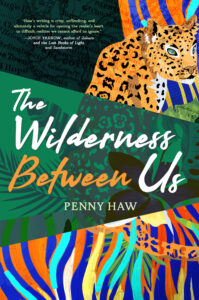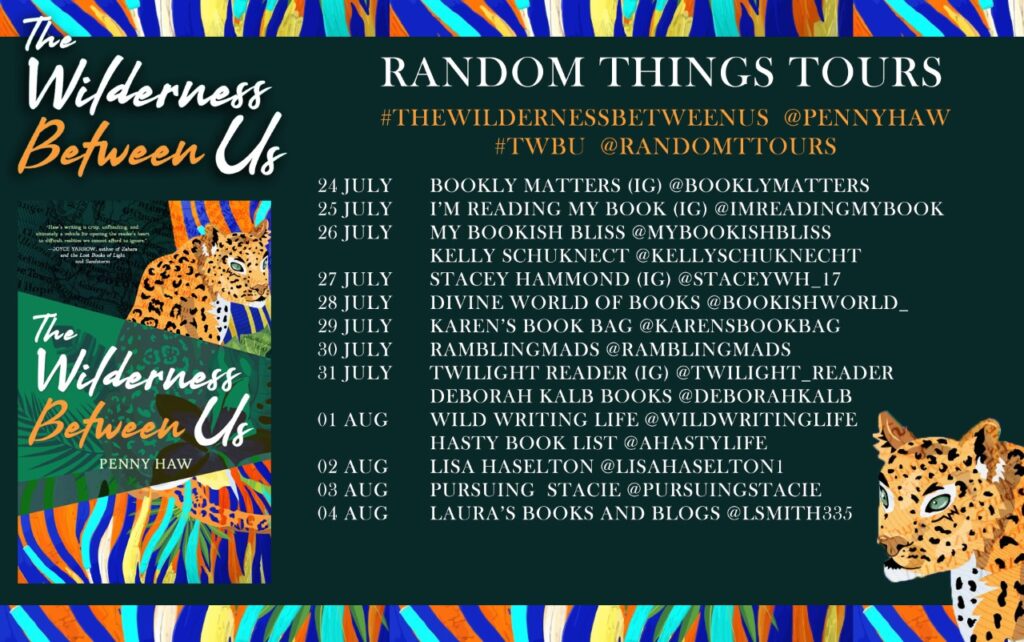 My special guest today is novelist Penny Haw and we’re chatting about her new women’s fiction, The Wilderness Between Us.
My special guest today is novelist Penny Haw and we’re chatting about her new women’s fiction, The Wilderness Between Us.
Bio:
Long-time journalist and columnist, and latter-day author, Penny Haw has written for many leading South African newspapers and magazines for more than three decades. Her children’s book, Nicko, The Tale of a Vervet Monkey on an African Farm was published in 2017 and is now included in school curricula. The Wilderness Between Us is her debut novel for adults, again expounding her love for animals and the outdoors.
Welcome, Penny. Please tell us about your current release:
Faye Mackenzie and her friends’ anorexic daughter, Clare, are thrown together when a flood separates them from their hiking group in the remote, mountainous Tsitsikamma region of South Africa. With Clare critically injured, Faye is compelled to overcome her self-doubt and fear of the wild to take care of the younger woman, who opens her heart to Faye.
As their new friendship takes the women on an unexpected journey of discovery, the rest of the group wrestles with the harrowing aftermath of their own near tragedy. When the hiking party is reunited, their number is reduced by one.
Juxtaposing physical and psychological intrigue, THE WILDERNESS BETWEEN US is a tale of two fragile women who unexpectedly find clarity, independence, and renewed purpose as they fight to survive. It is a vivid, moving story about family, friendship, adventure, and the healing power of nature and compassion.
What inspired you to write this book?
The idea of becoming isolated in the Tsitsikamma—which, by the way, is a magnificent corner of the world—came about while I was hiking there with a group of friends some years ago. Clare’s experience with anorexia is loosely based on my own battle with the illness when I was much younger. I am a nature lover and am intrigued by how being in the wilderness and among animals calms and rejuvenates humans. I wanted to explore how my characters might be thrown into a difficult situation in the wild and yet find the experience restorative. I am also interested in inter-generational friendships and how the young and not as young can learn from one another.
Excerpt from The Wilderness Between Us:
She’d hoped to find the girl back at Heuningbos Hut when she returned and, as Faye approached the open kitchen area and heard the clank of a plate and the thud of something falling on the stone floor, she was pleased.
“Hey! You’re back,” she called as she climbed the stairs.
The eyes, light brown and close-set, that met hers were not Clare’s. A large baboon sat in the middle of the table, knees splayed and genitals exhibited. He’d ripped a corner off the muesli box and was pouring the contents down his throat. Behind him, a marginally smaller baboon had the plastic top of the milk carton in his mouth and was peering into the box. Several other members of the troop were sniffing and tugging at the containers on the floor. The smallest among them sat alongside Michelle’s fancy cooler box. Turning her head to the side, the monkey ran her tongue across the lid.
Faye froze. She might’ve been unsure about the intentions of the wild pigs the previous day, but the baboons’ ambitions were clear; they wanted food. She also knew how vicious the animals could become if they felt cornered. She felt a spatter of frustration. What had she been thinking by leaving the food out? The information in the trail guide was unambiguous:
‘Do not feed animals or leave food accessible to them. Animals that are fed can become reliant on humans, lose their natural instinct to find food and even become aggressive. Food left for collection at cabins and any waste should be secured so that animals cannot get to it by any means.’
The bins at the cabin had animal-proof lids and the containers the hikers had brought were secure, but Faye had left the cardboard cartons containing the muesli and milk on the table. She’d lured the animals into the lapa.
As if sensing her self-reproach, the large male stopped guzzling the cereal and, box clutched to his chest, stared at her, his furry brow low across his eyes. Faye swallowed. What was he thinking? What was his plan? Should she turn and run? Drop her eyes and slowly walk backwards down the stairs?
Before she settled on a decision, the baboon opened his cavernous mouth to display two pairs, bottom and top, of terrifyingly long, yellow fangs and emitted a deafening bark-roar, which seemed to come from the pit of his belly and, with the lapa as echo chamber behind, reverberated across the valley.
Faye thought her knees would buckle as the baboon, with Derek’s box of muesli still firmly in his hand, leapt neatly off the table. Followed closely by the others, he loped to the far corner of the shelter, hopped down the stairs and cantered across the lawn. As the troop, the little cooler box licker trailing at the back, vanished into the trees, Faye sat down, breathing heavily.
What exciting story are you working on next?
Continuing the theme of relationships between people from different generations, I’m currently writing a story about a family who are thrown into disarray when a parent makes an unusual relationship decision. While it examines more serious things like society’s double standards and our inability to accept atypical lifestyles, I’m also hoping to flavour it with humour and tenderness.
 When did you first consider yourself a writer?
When did you first consider yourself a writer?
Writer is one thing but author another! While I have worked as a journalist all my adult life and so have essentially been a writer for decades, it took me a while to think of myself as an author—even after my first book was published. I think because, as a book lover from a very early age, I’ve always held authors in such high-esteem, it was difficult to consider myself among them.
Do you write full-time? If so, what’s your work day like? If not, what do you do other than write and how do you find time to write?
I’ve worked as a full-time writer, journalist, editor and magazine publisher for more than three decades. My days depend on my deadlines. If I’m working on a newspaper article, it means looking for sources, requesting interviews, conducting those interviews and writing. Recently, with my focus shifting to books, I spend more time on creative writing. Whereas once it was my ‘guilty secret’, kept for after hours and weekends, I now spend work hours writing books and doing all the other things that come with being an author in the 21st century. I’m hoping that I’ll be able to do that full-time in the not too distant future. When I’m not writing, I’m probably walking my dogs with my husband or heading out for a run. Writing demands hours of sitting. Walking and running provide something of a balance.
What would you say is your interesting writing quirk?
When I am faced with a blank page, about to start a new project, I typically trim my fingernails before I start. It’s not so much that procrastinating—okay, maybe a bit—but rather that it seems the words will flow more smoothly if my nails are neat.
As a child, what did you want to be when you grew up?
I wanted to be a veterinary surgeon. I love animals and grew up on a farm. For many years, I imagined myself becoming some kind of super hero veterinary surgeon who dashed between farms, saving animals and bowling over farmers with my brilliance. I suspect I got distracted by the fantasy of it, which, in part, is what led me to story-telling and writing. There’s a chance the fantasy may emerge in my writing soon—bringing me full circle, so to speak.
Anything additional you want to share with the readers?
Writers love hearing from readers. Don’t imagine an author—however well-established—won’t appreciate hearing from you, even if it’s just question or light comment. Nowadays, social media makes this easy. Even a few words can lift a writer’s spirits. A review on Goodreads, Amazon or elsewhere can make a huge difference. Connect with authors whose work you read. You’ll make their day. Thanks!
Links:
Website | Twitter | Instagram | Facebook | Goodreads | Amazon
Thanks for being here today, Penny.

